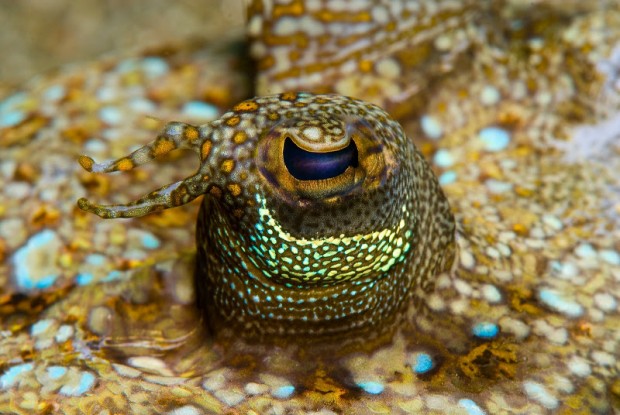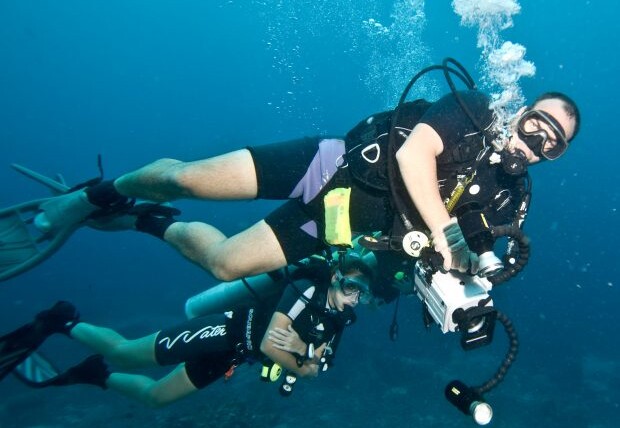Let us address an evolutionary adaptation that is evident when viewing underwater macro photos.
A lot of creatures need to conceal their appearance either for protection from hunters, or because they are hunters themselves and do not want to reveal their location.
As most photographers know, one of the best ways to locate a creature hidden among weeds, corals, rocks, etc is to look for the regular pattern of its eyes. Been round, symmetrical, and quite often black, it is easy to look for them among the background.
This is exactly what hunter and prey have learned to look for as well. One for food, the other for protection. This way, the eyes have evolved in a number of ways in order to avoid detection, and cause confusion to the observer.
Competition between hunter and prey is a major driver of evolution, leading to some truly incredible adaptations through a constant “arms race” between animals sharing the same environment.
This is the eye of a flounder. The eye has adapted to break its pattern not only with color, but with the fleshy appendages on its top too.
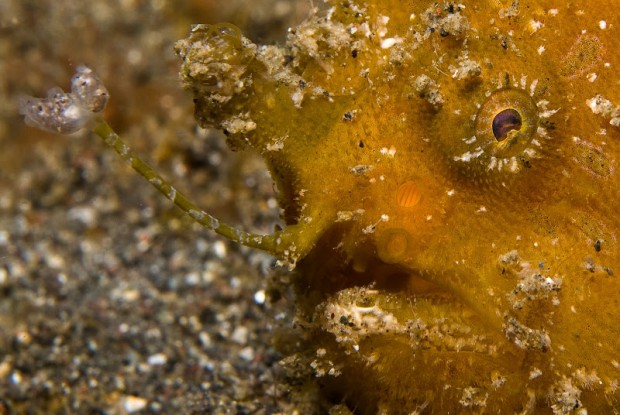
The eye of a frogfish has patterns breaking its outline, as well as a fleshy appendage that breaks the symmetry of the iris.
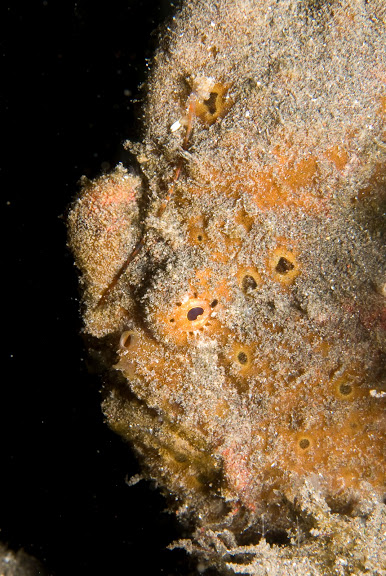
Similarly here, this frogfish has spots all over its body to conceal the location of its true eye.
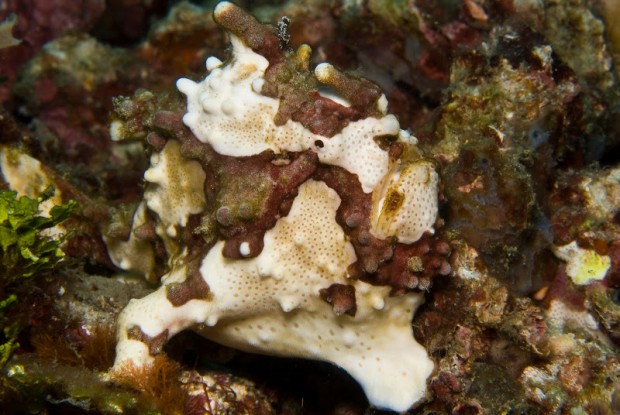
This frogfish uses a different trick. Wide bands of color disguises its body shape, as well as the location of the only symmetrical aspect on it: the round of the iris.
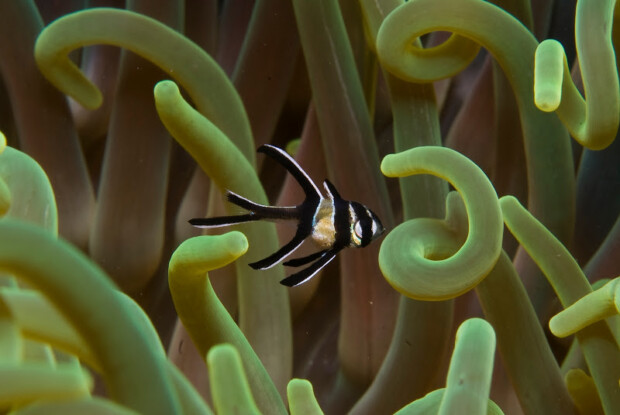
Similarly, this pajama cardinal fish makes use of a wide band of color to conceal the location of the iris.
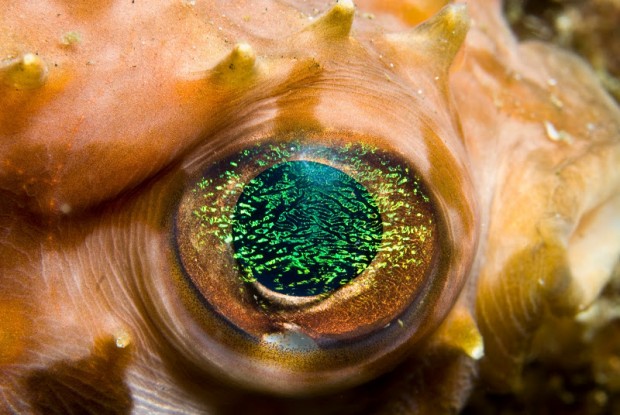
The eye of this puffer fish has a net-like adaptation that disguises its shape.
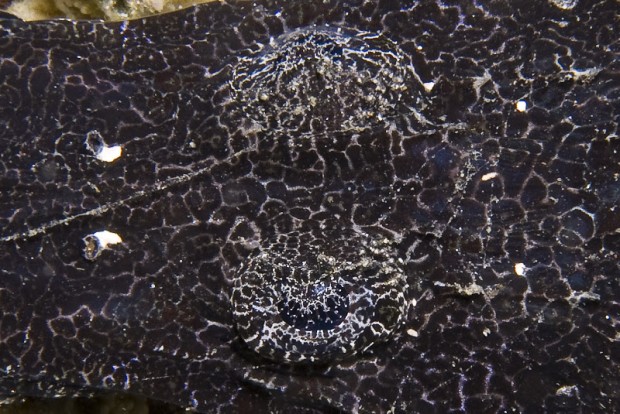
The crocodile fish, an exceptional ambush predator, has an even more elaborate net camouflaging the shape of its eye. Incredibly, the optical nerve appears able to compensate for all this amount of interference that the frills must be introducing.
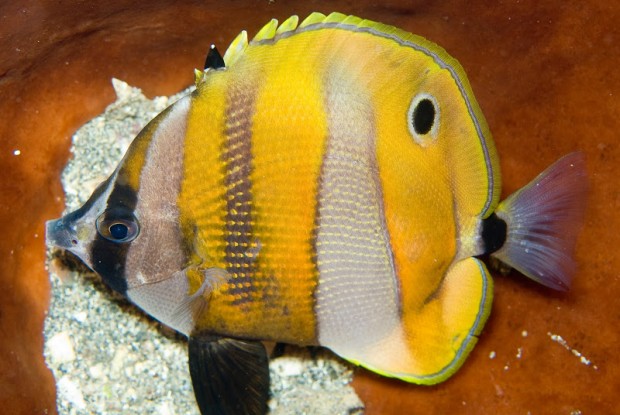
Butterfly fish employ two techniques at the same time: A wide band of color covers the actual eye, while a fake eye appears at the back of the body. Scientists are not certain what is the evolutionary benefit of such adaptations, they can help disguise the outline of the animal, make it appear larger than what it really is, or confuse predators into attacking a less vulnerable part of the body.
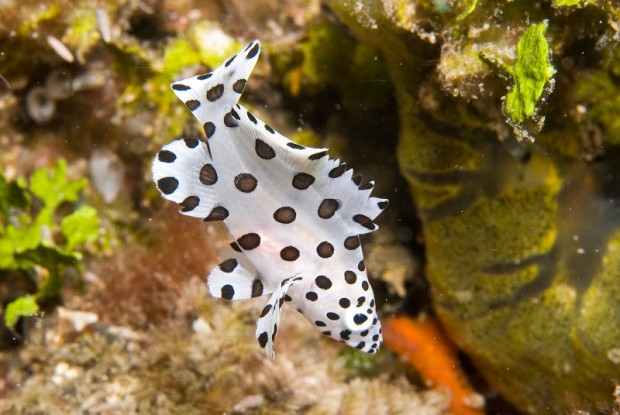
The Juvenile of the Baramundi Cod (Chromileptes altivelis), goes overboard by disguising the location of its eye with similar spots all over its body.
Text and photos by Babis Sfougaris.



